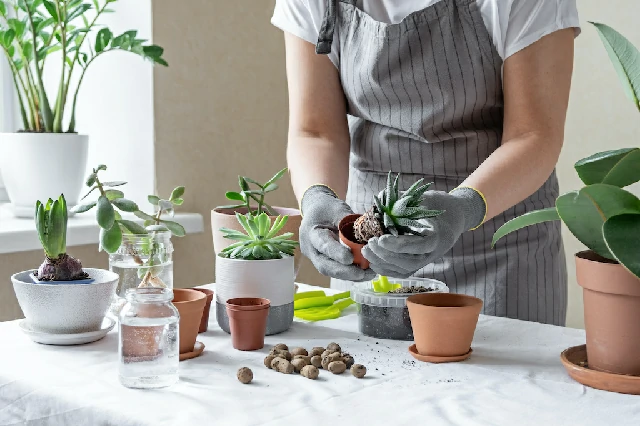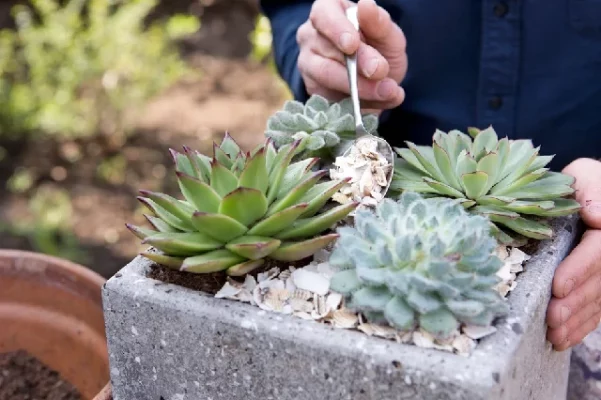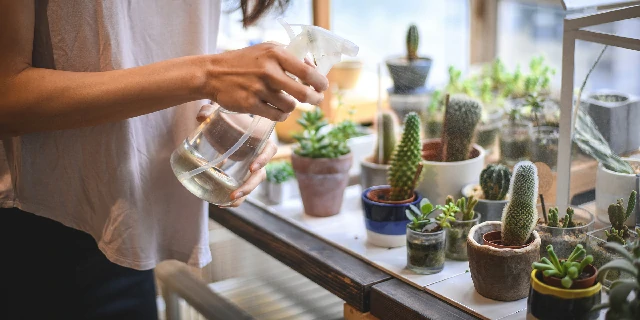Introduction:
Succulents are popular plants known for their unique and varied shapes, colors and hardiness. These plants thrive in dry environments and are relatively easy to care for. Whether you’re a beginner or a seasoned plant enthusiast, this step-by-step guide will help you take good care of your succulents and keep them thriving.
Step 1:
Choose suitable succulents.
Choosing the right succulent is crucial to the long-term health and growth of your succulent. Consider factors such as lighting conditions, temperature, and available space. Popular succulent varieties include echeveria, aloe vera, crassula, haworthia, and sedum. Explore the possibilities by visiting a local nursery or garden center.
Step 2:
Make sure you have enough light.
Succulents need bright light to grow and thrive. Place in direct sunlight for at least 6 hours each day. A south-facing window sill is ideal as it receives plenty of sunlight. If natural light is limited, supplement the light with fluorescent grow lights placed 12 to 18 inches above the plants.
Step 3:
Understanding your irrigation needs:
One of the most common mistakes in caring for succulents is overwatering. Succulents are adapted to store water in their leaves and stems, allowing them to survive in dry environments. Irrigation needs vary according to climate and season. However, a general guideline is to water deeply and wait until the soil is completely dry between waterings. Underwater is better than over water. Step 4:
Use well-drained soil.

Step 4:
Use Well-Draining Soil:
Succulents grow in well-drained soil that prevents drainage and root rot. Use a special potting medium for succulents and cacti, or create your own potting medium by combining regular potting medium with coarse sand or perlite. Make sure the soil is well ventilated and excess water drains freely.
Step 5:
Irrigation technology:
Use the soak and dry method when watering succulents. Water thoroughly until water runs out of the drainage holes. Make sure the entire root ball is moist. Discard excess water from saucers and trays to prevent water pooling. Water again after the soil is completely dry.
Step 6:
Ensures optimum humidity and temperature.
Succulents prefer moderate to low humidity. Do not place in damp areas such as bathrooms and kitchens as it may cause fungal diseases. Succulents grow at temperatures between 15°C and 27°C. Bring indoors or provide adequate shelter to protect from frost and extreme heat.
Step 7:
Fertilize sparingly:
Succulents have relatively low nutritional requirements. During the growing season (usually spring and summer), feed with diluted succulent fertilizer once a month. Follow the directions on the fertilizer package and be careful not to overdo it as it can damage the plants.

Step 8:
Pruning and Propagation:
Occasional pruning may be necessary to maintain the shape and size of succulents. Use sanitized pruning shears to snip off any overgrown or unhealthy growth. Succulents are easily propagated from leaf and stem cuttings. Allow the cut to dry out and harden before planting in well-drained potting soil.
Step 9:
Pest and disease monitoring:
Succulents are generally resistant to pests and diseases. However, the most common problems include mealybugs, aphids, and fungal infections. Check your plants regularly for signs of infestation or disease. B. Sticky residue, mucous membranes, or discoloration. Treat affected plants with organic insecticidal soap or neem oil, or contact your local horticultural center for appropriate treatments.
Conclusion:
By following this step-by-step guide, you can ensure the health and longevity of your succulents. Remember to give it plenty of light, use well-drained soil, water it properly, and be mindful of temperature and humidity. With proper care, succulents will retain their amazing beauty and hardiness for years to come.
Happy Gardening!

